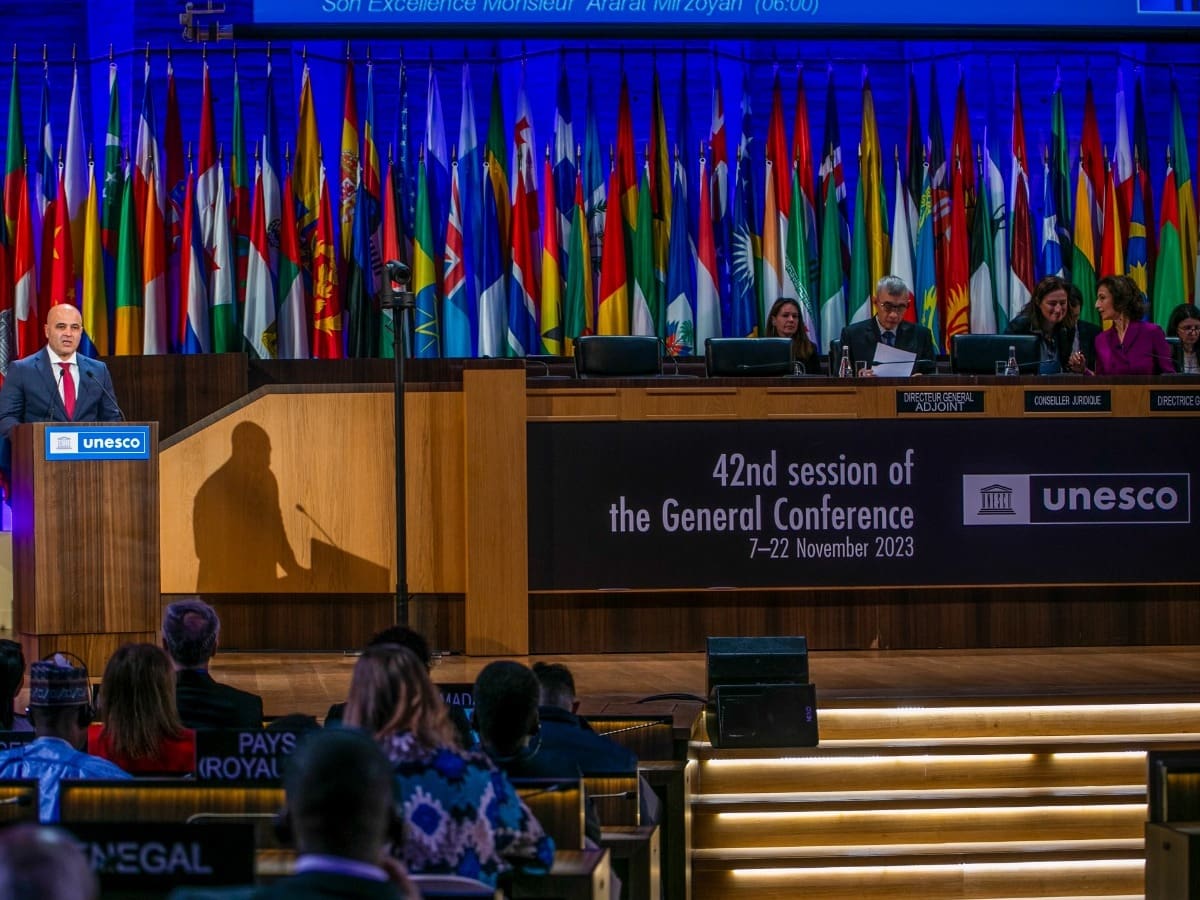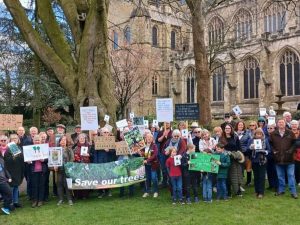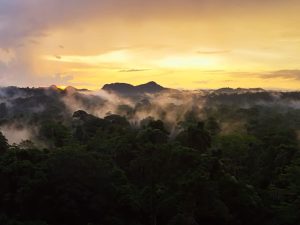Thursday 18 of April marks the annual United Nations Educational, Scientific and Cultural Organization (UNESCO) World Heritage Day. This year however, an Indigenous rights non-profit is exposing UNESCO for the racist colonial institution that it is.
Significantly, the group is calling out the colonial conservation model that sits at the heart of the UNESCO designated World Heritage Sites.
On top of this, the Canary has dug up more evidence revealing the systemic violence, displacement, and abuse of Indigenous and local communities living at a number of these sites.
UNESCO World Heritage Sites
Across the world, there are currently 1199 World Heritage Sites (WHS). UNESCO designates WHS status for locations that are:
of outstanding universal value to humanity.
Crucially, UNESCO intends this to ensure conservation of world places of natural and cultural heritage. To date, natural sites make up 266 of the World Heritage List. These amount to approximately 3.5 million square kilometres, across more than 100 countries – larger than the size of India.
On 18 April every year, UNESCO and the International Council on Monuments and Sites (ICOMOS) mark World Heritage Day.
However, to mark this year’s celebrations, non-profit Survival International has published a scathing rap-sheet of human rights abuses in six of these sites. Notably, it has taken aim at UNESCO for its complicity in the illegal eviction and abuse of Indigenous people.
Decolonize UNESCO
Survival’s “#DecolonizeUNESCO” report points to multiple UNESCO World Heritage Sites that are the scene of serious and continuing conservation-related rights abuses.
In the report, Survival highlighted that:
at least a third of the 227 sites designated as World Heritage“natural” sites under UNESCO’s 1972 World Heritage Convention, “are fully or partially located within the traditional territories of Indigenous peoples and are of great significance for their livelihoods and their spiritual, social and cultural well-being”.
However, it said that:
instead of being celebrated as the best guardians of their territories, Indigenous peoples are paying a bitter price for having shaped and inhabited the most beautiful and important landscapes of our world.
Alarmingly, Survival researchers’ on-the-ground investigations have documented a litany of violence in WHS. In Indigenous communities across Africa and Asia, they have uncovered repeated cases of torture, rape, and killings of Indigenous people.
Significantly, the report lists six World Heritage Sites that occupy stolen Indigenous land. These include:
- Kaeng Krachan Forest Complex, Thailand
- Kaziranga National Park, India
- Chitwan National Park, Nepal
- Ngorongoro Conservation Area, Tanzania
- Odzala-Kokoua National Park, Republic of Congo
- Kahuzi-Biega National Park, Democratic Republic of the Congo
UNESCO backing abuse
Today, the Canary has also highlighted an opportunistic luxury safari company displacing and abusing Indigenous communities in one of these WHS. Specifically, tourism operator Thomson Safaris has capitalised on the UAE royal family’s land-grabbing for a 1,500 square km game reserve. Since 2022, Tanzanian authorities have violently evicted many of the Maasai people in the Ngorongoro Conservation Area.
As we reported:
During this eviction in 2022, security forces fired live ammunition on the Maasai. As a result, they severely wounded dozens and displaced thousands more Maasai community members. The United Nations Permanent Forum on Indigenous Issues (UNPFII) has estimated that the land-grab for the 1,500 square km (approximately 370,000 acres) game reserve alone could displace 70,000 Maasai people from their ancestral lands.
Of course, UNESCO has explicitly backed removing the Maasai. One Maasai leader quoted by Survival has said:
UNESCO’s support is being used to evict us. We are very sick and confused, we don’t know when we will die.
Separately, the Oakland Institute has previously demonstrated UNESCO’s complicity in this. Crucially, it trashed the institutions claim that it had:
never at any time asked for the displacement of the Maasai people.
By contrast, UNESCO had in fact done exactly that. Notably, in the Tanzanian government’s review of the Ngorongoro Conservation Area it had backed “relocating” local people:
to establish Ngorongoro Nature Reserve. Retain historical bomas for cultural tourism.
Bomas are the Maasai people’s family homesteads complexes. So, in other words, it wanted to kick out the Maasai, but keep their homes for rich white tourists to ogle at.
‘Fortress conservation’ at its finest
Other WHS in the report epitomise the violent colonial impulses of this ‘fortress conservation’ approach. This is a militarized conservation model which has historically evicted existing Indigenous and local inhabitants from their traditional lands, or otherwise restricted their access to crucial resources like food, fuel, and medicinal plants.
For example, the park authorities and the Congolese army has implemented this in the Kahuzi-Biega National Park in the Democratic Republic of Congo (DRC).
Specifically, in 2019, they started a campaign to purge the forest of Indigenous Batwa people who had returned to their ancestral lands in the park. They conducted several extremely violent attacks against Batwa villages, involving many well-documented atrocities.
Naturally, UNESCO had promoted an approach based on force and militarization. In particular, it had urged the government to “increase the scope and frequency of the patrols” and to “evacuate the illegal occupants”.
The Batwa were hit hard by the resulting violence, but said:
We live in the forest. When they confront us, they rape us. Those of us who will die will die, but the forest is where we will stay.
Meanwhile, UNESCO designated Odzala-Kokoua National Park in the Republic of Congo a WHS in 2023. This was despite well-documented abuses taking place there, including rape and torture.
Systemic UNESCO WHS rights violations
Now, the Canary has also found at least 16 protected areas (PAs) with WHS designations – not including the six Survival identified – that have displaced or adversely impacted Indigenous communities.
Using a combination of databases and targeted searches, we discovered WHS covering PAs spanning eleven countries with reports of land dispossession and human rights violations.
- Lobeke National Park, Cameroon (Part of Sangha Trinational WHS)
- Dja Wildlife Reserve, Cameroon
- Dzanga-Ndoki National Park, Central African Republic (Part of Sangha Trinational WHS)
- La Salonga National Park, DRC
- Okapi Wildlife Reserve, DRC
- Nouabale-Ndoki National Park, Republic of Congo (Part of Sangha Trinational WHS)
- Lope National Park, Gabon (Part of Ecosystem and Relict Cultural Landscape of Lopé-Okanda WHS)
- Manas Wildlife Sanctuary, India
- Sundarbans Tiger Reserve, India (Part of the Sundarbans National Park WHS)
- Serro do Mar State Park, Brazil (Part of the Atlantic Forest Southeast Reserves WHS)
- Jau National Park, Brazil (Part of the Central Amazon Conservation Complex WHS)
- Bwindi Impenetrable National Park, Uganda
- Serengeti National Park, Tanzania
- Selous Game Reserve, Tanzania
- Lake Bogoria National Reserve, Kenya (Part of the Kenya Lake System in the Great Rift Valley WHS)
- La Amistad Biosphere Reserve, Costa Rica
While each now has WHS status, often the initial eviction of local inhabitants took place before UNESCO designated it. However, it did so in knowledge of this torrid history of human rights violations and with the full understanding that the land belonged to Indigenous communities.
Ostensibly, both the Canary’s and Survival’s research shows that UNESCO WHS are maintaining patterns of colonial land-grabbing and violence against Indigenous peoples.
Complicity “beyond silence”
Given this, Survival is demanding UNESCO to act. In particular, it is calling on it to stop backing the abuse of Indigenous peoples’ rights in the name of conservation. Moreover, it is compelling the organisation remove World Heritage status from any site where human rights atrocities are occurring. Instead, it wants UNESCO to promote a model of conservation based on the full recognition of Indigenous land rights.
Survival’s director Caroline Pearce said:
UNESCO has played a key role in giving legitimacy to many of the most notorious Protected Areas in Africa and Asia, and it’s largely ignored the well-documented atrocities being committed on its watch. What it calls “Natural World Heritage Sites” are very often the stolen ancestral lands of Indigenous peoples, who are being kept out by force, intimidation and terror. Its complicity has gone beyond silence to encompass the active support of governments, and actions, that violate Indigenous rights. It must remove World Heritage Status from any such site where abuses are taking place.
Survival is launching a day of online activism to coincide with the publication of the report, asking people to share a new video and tag #DecolonizeUNESCO.
Feature image via Влада на РСМ/Wikimedia, cropped and resized to 1200 by 900, image in the public domain




